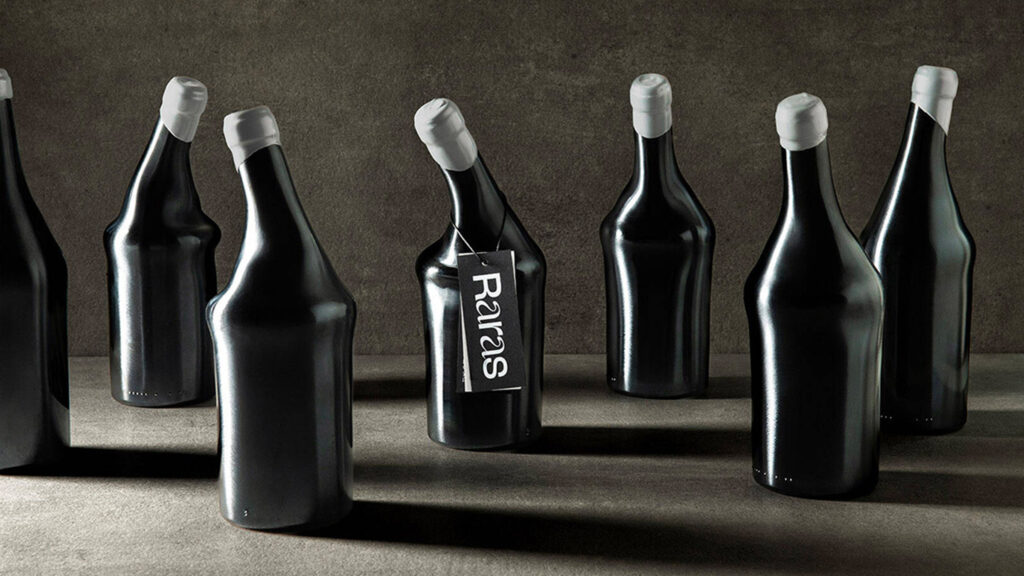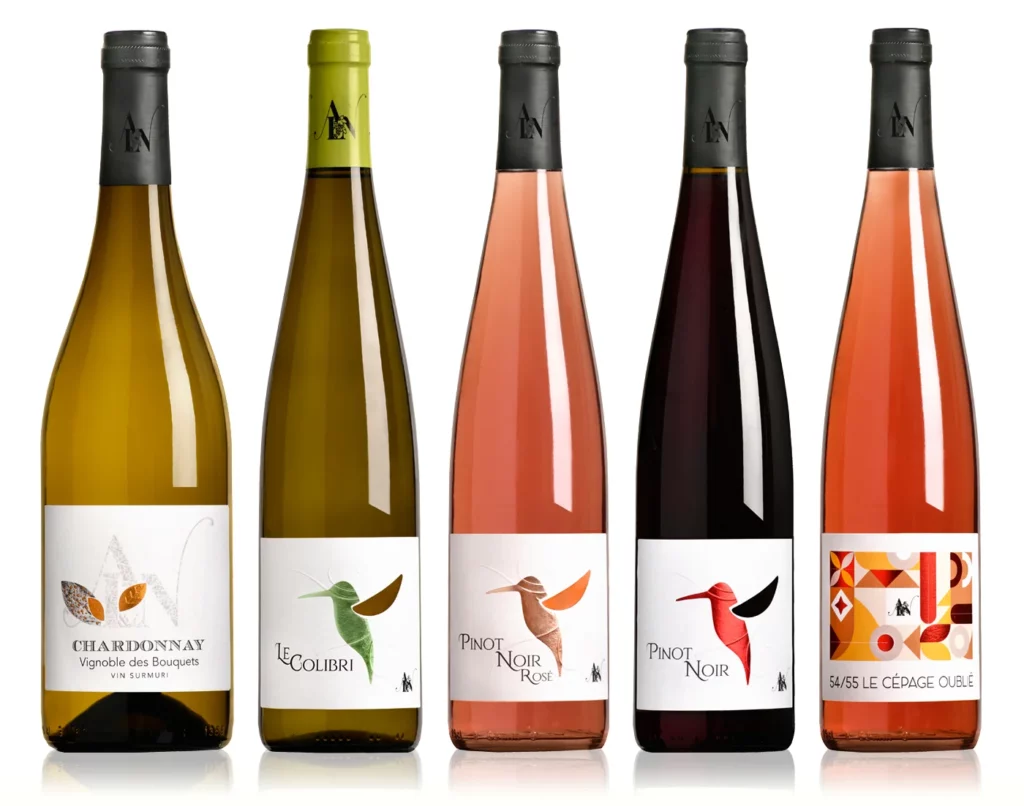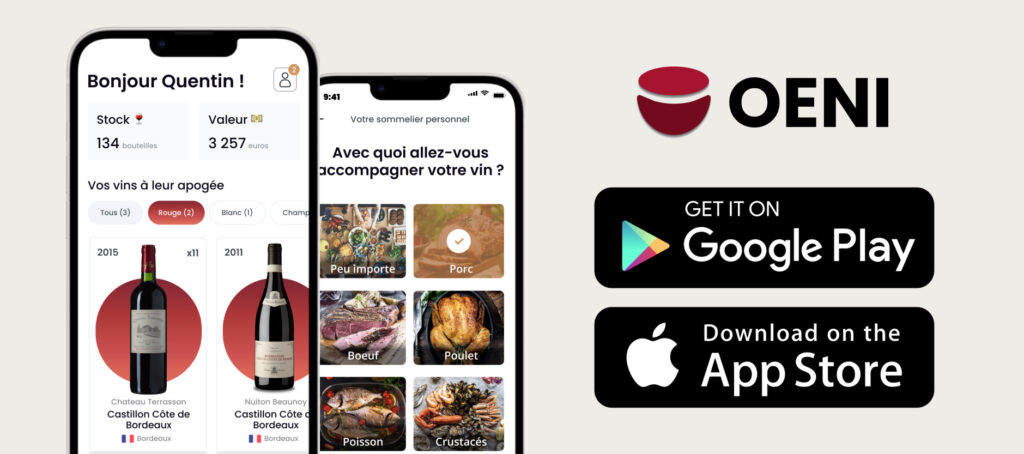Wine first seduces with its taste, but it often begins with the eye. Today, some vintages rival each other in boldness to capture our attention. Wine bottle design has become a field of innovation. It reflects an identity, tells a story and appeals to the consumer.
If you're interested in wine-related articles, download our app for IOS or Android. It will give you access to our wine lexicon, our articles and our innovative solution, designed for all wine consumers and collectors.
When aesthetics become a lever for differentiation
On a supermarket shelf or in an online store, a bottle stands out from the crowd because of its appearance. This is where wine bottle design becomes strategic. It conveys the winery's image. It gives a first and sometimes decisive impression.
Some producers opt for sobriety. Others dare to use unexpected shapes, bright colors or unusual materials. Wine marketing understands this visual challenge. It's not a question of betraying the product, but of enhancing it with coherence.
Bottles that shake up traditional codes
In Georgia, winegrowers use clay bottles inspired by ancient amphorae. This approach evokes tradition, but in a novel packaging. In California, certain cuvées are enclosed in rectangular bottles, similar to perfume flasks.
In Spain, the Casa Mariol winery offers all-black wine packaging with modern typography. The label reads vertically. This visual break is particularly appealing to a young, urban audience.
Wine bottle design becomes a creative, almost artistic act. It doesn't just inform. It offers a visual experience.
Innovative shapes at the service of the brand

Some houses play on shapes to reinforce their universe. London-based Stranger & Stranger designs bespoke bottles for several customers. Each project tells a story. One South African cuvée features a zebra skull on a gold background. Another features a stylized snake around the neck.
This type of wine packaging transforms each bottle into a collector's item. Wine marketing emphasizes the uniqueness of the product. Wine lovers no longer buy just a wine, but also a strong visual message.
Interactive and technological labels
Wine bottle design is no longer limited to visuals. Some wineries are integrating technology into their labels. In Australia, producer 19 Crimes offers bottles whose portraits are animated with a mobile application. Each wine tells the story of a convict sent to Australia in the 19th century.
By scanning the label, the consumer triggers a video. This interaction leaves a lasting impression. Wine marketing becomes immersive, almost playful. We retain the experience as much as the taste.
Eco-design: a growing trend
Faced with environmental challenges, more and more producers are reinventing their wine packaging to reduce its impact. They use recycled cardboard, natural corks and vegetable-based inks. Some bottles feature compostable labels or lightweight formats.
Wine bottle design is evolving towards greater responsibility. It proves that aesthetics and ecology can go hand in hand. This approach is winning over a new generation of ethically-conscious consumers.
Engaging messages through visuals

Beyond appearance, some bottles deliver a message. Château Puech-Haut offers a collection of erasable labels, which can be personalized with chalk. This idea encourages creativity. It transforms wine packaging into a medium for expression.
Other estates choose graphics that evoke freedom, diversity or inclusiveness. Wine marketing thus becomes a megaphone. It conveys contemporary values without compromising the quality of the content.
Limited editions: between art and exclusivity
Some houses collaborate with artists to create limited editions. In France, Mouton Rothschild entrusts its label to a well-known painter every year. Picasso, Warhol and Haring have all signed these creations. Wine bottle design becomes a work of art in its own right.
These editions attract collectors. They reinforce the symbolic value of wine. Wine marketing plays on rarity, emotion and culture. A bottle becomes a visual and emotional investment.
Wine in cans, tubes or pouches
To appeal to a new audience, some producers are completely breaking the mould. Wine in cans is a real success in the United States. It comes in rosé, sparkling or dry white. Practical, light and easy to carry, this format appeals to a younger clientele.
Other brands are launching tasting tubes, perfect for tests or boxed sets. Some festivals offer wine in a pocket, with a playful design. Wine packaging adapts to nomadic uses. It reinvents the relationship with the product.
The importance of design for export
Internationally, wine bottle design plays a crucial role. It allows you to stand out in highly competitive markets. It helps to promote a winery's origin, history or innovation.
Some producers adapt their labels to suit different countries. They simplify the language, adopt more universal symbols, or modify the colors. Wine marketing is becoming more global, but remains attentive to cultural specificities.
Design for experience
Ultimately, wine bottle design doesn't replace wine quality. But it does enhance the overall experience. It creates an emotional bond. It extends the pleasure of tasting even before the first sip.
Producers who innovate in this field don't just want to sell. They want to make their mark, to surprise, to build loyalty. Their wine packaging becomes a signature, an asset, a visual promise.
If you enjoyed this article, don't hesitate to read the following one "INAO's role in appellation recognition"which may also be of interest to you!





